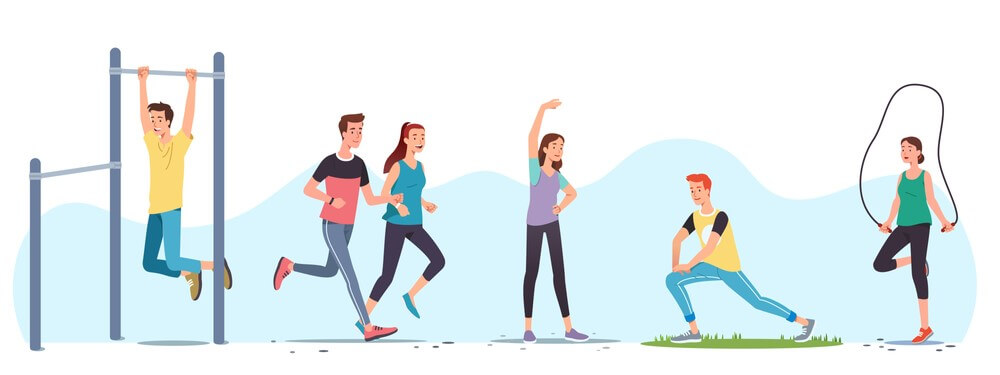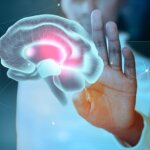Introduction
Movement disorders such as Parkinson’s disease and essential tremors can significantly impact a person’s quality of life. Fortunately, medical advancements have provided effective treatment options, including Deep Brain Stimulation (DBS). This revolutionary treatment, available in leading centers like our renowned deep brain stimulation hospital in Mumbai at the Neurological Surgery Department at Jaslok Hospital, involves sending electrical signals to specific parts of the brain, offering hope to many.
Deep Brain Stimulation (DBS) as a Treatment
DBS has emerged as a highly effective treatment for movement disorders. It involves placing tiny electrodes in specific areas of the brain that are responsible for controlling movement. These electrodes generate electrical impulses, which modulate the abnormal brain activity associated with movement disorders. DBS can effectively reduce tremors, stiffness, and other motor symptoms, significantly improving the overall quality of life for individuals with movement disorders. Successful outcomes are often associated with a thoughtful integration of deep brain stimulation treatment.
The Synergistic Effect: Exercise and DBS
When exercise is coupled with DBS, it can create a synergistic effect that optimizes treatment outcomes. Combining exercise, a potent yet straightforward activity, with the expertise of deep brain stimulation, creates a dynamic duo. It enhances the positive effects of the treatment, ultimately contributing to a higher deep brain stimulation success rate.
How Exercise Affects Brain Function
Engaging in regular physical activity has proven benefits for brain health. Exercise increases blood flow to the brain, promoting the delivery of oxygen and nutrients necessary for optimal neural functioning. It stimulates the release of growth factors, such as Brain-Derived Neurotrophic Factor (BDNF), which promotes neuroplasticity and the growth of new neurons. These neurochemical changes within the brain can help improve motor function and overall cognition.
Complementing DBS with Physical Activity
Integrating exercise into a treatment plan that already includes DBS can provide a comprehensive approach to addressing movement disorders. By incorporating physical activity, individuals can further stimulate the brain regions targeted by DBS, potentially leading to enhanced symptom management and overall well-being. Exercise also has broader health benefits, including cardiovascular fitness, muscle strength, and improved mood, which can contribute to the overall effectiveness of DBS treatment. This synergy is celebrated in leading deep brain stimulation centers worldwide.
Benefits of Integrating Exercise with DBS
The integration of exercise with DBS offers a range of benefits that extend beyond symptom management.
Improved Motor Function
Regular exercise can help individuals with movement disorders improve their motor function. It can enhance muscle strength, flexibility, and coordination, leading to smoother, more controlled movements. When exercise is seamlessly integrated with deep brain stimulation treatment, not only are muscles engaged, but there’s an overall enhancement in motor function, contributing to an improved quality of life. Such positive outcomes make a deep brain stimulation hospital a hub for transformative care.
Enhanced Quality of Life
Movement disorders can negatively affect various aspects of one’s life, including social interactions, physical abilities, and overall well-being. By integrating exercise with DBS, individuals can experience an improved quality of life. Regular physical activity can enhance physical fitness, promote social engagement, and boost self-esteem. Moreover, the combination of exercise and DBS can reduce medication reliance, potentially minimizing side effects and improving overall treatment outcomes.
Cognitive and Emotional Well-being
Exercise has well-known cognitive benefits, including improved memory, attention, and executive function. By engaging in physical activity alongside DBS, individuals with movement disorders can potentially experience enhanced cognitive function. Additionally, exercise is known to release endorphins, which improve mood and reduce symptoms of depression and anxiety. The combination of exercise and DBS can provide a holistic approach to addressing the cognitive and emotional well-being of individuals with movement disorders.
Tailoring Exercise Regimens for Individuals with DBS
To maximize the benefits of exercise for individuals with DBS, it is important to customize exercise regimens to meet their specific needs.
Safety Measures and Precautions
Physical activity should be conducted under the guidance of healthcare professionals and exercise specialists who can ensure the safety and effectiveness of the regimen. Incorporating exercises that focus on balance, coordination, and stability can be particularly beneficial for individuals with movement disorders. It is crucial to consider any potential risks associated with the specific movement disorder and adapt the exercise program accordingly. It’s about being cautious and listening to what your body is telling you, a principle upheld in reputable deep brain stimulation hospitals.
Tracking Progress and Adjusting Strategies
Regular monitoring of progress is vital to optimize exercise regimens for individuals with DBS. Assessing changes in motor function, cognitive abilities, and emotional well-being can guide adjustments to the exercise program. Collaborating with healthcare professionals can help identify the most effective exercises and tailor the regimen as needed to achieve the desired outcomes.
In the grand performance of managing movement disorders, the success lies in the collaboration of deep brain stimulation surgery in India, exercise, and the expertise found in specialized centers. The integration of exercise with DBS provides a promising avenue for enhancing treatment outcomes for movement disorders. By understanding the synergistic effect of exercise and DBS, individuals can achieve improvements in motor function, quality of life, and cognitive and emotional well-being. Tailoring exercise regimens to meet individual needs and working closely with healthcare professionals will help ensure the safety and effectiveness of these integrated approaches. By embracing the potential of exercise in conjunction with DBS, individuals with movement disorders can strive for a better quality of life and improved overall well-being.
Related: Incorporating Avocados into a Parkinson’s-Friendly Diet
Best Deep Brain Stimulation Center in Mumbai
Welcome to Neurological department at Jaslok Hospital, your trusted healthcare partner in Mumbai! Known for our commitment to excellence, we proudly stand as the best deep brain stimulation center in Mumbai. Our state-of-the-art facility combines cutting-edge technology with compassionate care, ensuring the highest standards in neurological treatment. At Neurological department at Jaslok hospital, we understand the significance of finding the right center for deep brain stimulation. Our dedicated team of experts leverages advanced techniques to provide personalized solutions, enhancing the quality of life for our patients. Trust us to be your beacon of health, offering not just treatment but a holistic approach to well-being.





